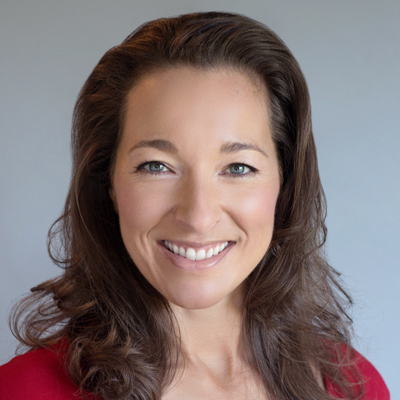
Laura Clydesdale
Contributor
My daughter didn’t make the soccer team.
It wouldn’t have been such a big deal except this was the team she tried out for and made last year. Even worse, all her teammates from last year made it. All of them.
She placed on the lower team with a bunch of girls she didn’t know.
She was devastated.
This isn’t going to be the usual musing on how failure is a necessary part of life, that she took a risk; it didn’t pan out, and she’s better for it.

Photograph via Michael Hull
This story is, perhaps, more valuable: that owning the excruciating pain, disappointment and embarrassment of failure can make all the difference between rising like a phoenix or simmering like a pile of ashes.
The reality was that she didn’t have a good try-out. At first, she listed all the reasons why. She might have been a little overconfident, or it could have been the sleep-over that she shouldn’t have attended the night before. It could have been because she is petite for her age while all the other girls are morphing into gazelles. Her biggest excuse was that her old coach was replaced with someone who didn’t know her.
She licked her wounds as she went through all the possible excuses for weeks afterward.
I wasn’t sure how this was going to turn out. She was very raw and a tween. I knew she could very well be a powder keg that I didn’t want to light by “trying to help.” So I decided to watch quietly from a distance.
Then she got silent. Like she had made up her mind about something.
Would she tell me she wanted to quit? Would she become passive aggressive on the team?
I braced myself.
At the pre-season meeting with the new team, not surprisingly, she found a seat in the back of the room. She sat slumped and quiet throughout until they got to the number of practices per week. This team would only practice one day a week. Last year, her team practiced 2+ times a week. She suddenly sat upright and whispered to me, “How am I going to get better with fewer practices?” I was surprised by her comment and suggested she talk to her new coach.
He liked her reasoning and recommended sending an email asking the coach from the higher team…her old team…if she could guest practice with them.
“How do you feel about that?” I asked her.
“It’s kinda embarrassing but I guess we should send the email. I really need more practices.”
So we wrote the email request together. No assumptions. Just one extra practice and lots of gratitude and thank you’s for the extra ball touches.
He agreed and was extremely welcoming.
Every day she went to this extra practice, she faced the shame and disappointment in not doing her best the first time around. Every time she went to this practice, she knew she was reminding those girls she didn’t make it.
I watched her take a deep breath each week before getting out of the car and own all of it. I listened to her respond to the girls who asked her, “are you back on the team?”
This time, there were no excuses.
And that is when she started to transform.
Photograph via Michael Hull

Brene Brown, the author of Rising Strong, stresses that the usual narrative of struggle to success always seems to gloss right over the very very painful bits to bask in the glow of the victorious ending. She says this is a mistake.
Her research has proven that there is a clear pattern among people who rise steadily from hurt or adversity – they decide to own their stories, and deal head-on with the pain and discomfort.
She says, “There are too many people today who instead of feeling hurt are acting out their hurt; instead of acknowledging pain, they’re inflicting pain on others. Rather than risking feeling disappointed, they’re choosing to live disappointed. Emotional stoicism is not badassery. Blustery posturing is not badassery. Swagger is not badassery. Perfection is about the furthest thing in the world from badassery.”
Brown says it’s the age old ‘hero’s journey.’ “Our job is not to deny the story, but to defy the ending—to rise strong, recognize our story, and rumble with the truth until we get to a place where we think, Yes. This is what happened. This is my truth. And I will choose how this story ends.”
In other words; we “reckon,” we “rumble,” and then, we wage a “revolution.”
This is Brown’s “Rising Strong” process:
THE RECKONING: WALKING INTO OUR STORY — Recognize emotion, and get curious about our feelings and how they connect with the way we think and behave.
THE RUMBLE: OWNING OUR STORY — Get honest about the stories we’re making up about our struggle, then challenge these confabulations and assumptions to determine what’s truth, what’s self-protection, and what needs to change if we want to lead more wholehearted lives.
THE REVOLUTION — Write a new ending to our story based on the key learnings from our rumble and use this new, braver story to change how we engage with the world and to ultimately transform the way we live, love, parent, and lead.
Two months into the season, at the end of one of the guest practices, the coach gathered the squirming, giggling girls around before they disappeared into our awaiting cars and said, “That’s it. I’m sick of all of the horsing around. If you don’t start paying more attention during practice, just remember, there are kids on the lower team that are working hard and playing great.”
Then he turned and smiled right at my daughter.
Laura Clydesdale had an epiphany one day when she noticed her then 10-year-old daughter exhibiting some of the same career-derailing traits as many of her female clients. Did it really start this early, she wondered? Laura decided to leverage her 15 years of experience as a leadership development consultant to delve deep into the world of girls’ leadership. Laura started her blog Lead Up to chronicle the journey she was taking with her daughter. Laura’s early history in finance and auditing for both General Electric and the Gap, Inc. compels her to conduct extensive research and seek fact-based solutions for the topics she tackles. However, Laura is unique in that her persuasive points are always woven together with an irresistible human element to create her unique stories.
Laura lives in Berkeley, CA with her husband and two children where she also enjoys sinking her teeth into big philanthropic projects that make a commensurately big impact like Notes & Words and TEDxYouth@EB.
For more posts by Laura Clydesdale visit her blog here.
You can follow her on Twitter at @l_clydesdale and can be contacted at laura(at)lauraclydesdale.com.






